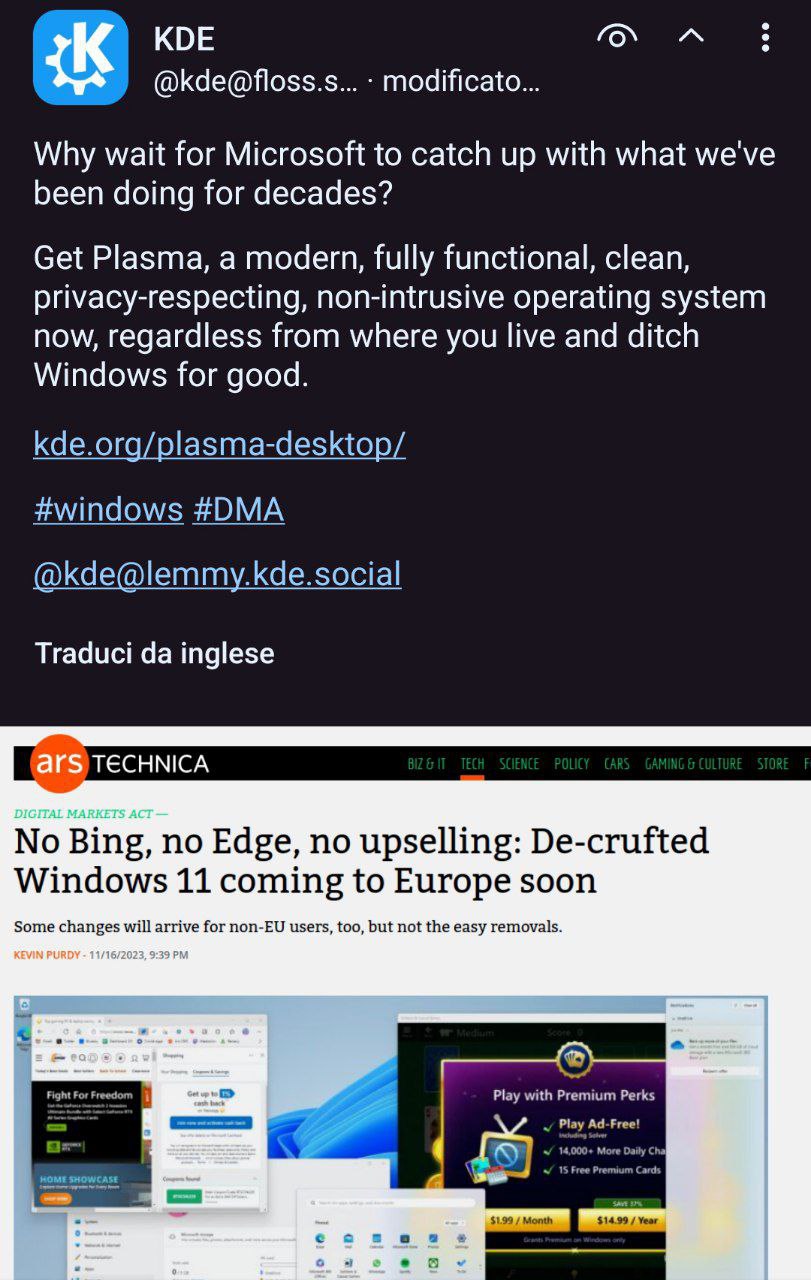this post was submitted on 23 Nov 2023
1969 points (98.2% liked)
Linux
52891 readers
331 users here now
From Wikipedia, the free encyclopedia
Linux is a family of open source Unix-like operating systems based on the Linux kernel, an operating system kernel first released on September 17, 1991 by Linus Torvalds. Linux is typically packaged in a Linux distribution (or distro for short).
Distributions include the Linux kernel and supporting system software and libraries, many of which are provided by the GNU Project. Many Linux distributions use the word "Linux" in their name, but the Free Software Foundation uses the name GNU/Linux to emphasize the importance of GNU software, causing some controversy.
Rules
- Posts must be relevant to operating systems running the Linux kernel. GNU/Linux or otherwise.
- No misinformation
- No NSFW content
- No hate speech, bigotry, etc
Related Communities
Community icon by Alpár-Etele Méder, licensed under CC BY 3.0
founded 5 years ago
MODERATORS
you are viewing a single comment's thread
view the rest of the comments
view the rest of the comments

Unlike Windows and MacOS, the Linux ecosystem is a lot more modular. For example, graphical user interfaces. There are a few types, ranging from ruthlessly simple tiling window managers to more complex desktop environments that more closely resemble the Windows or MacOS experience.
Linux users may take their pick between about a dozen desktop environments (DEs), including Gnome, Cinnamon, Mate, xfce and LXQT.
KDE (once standing for Kool Desktop Environment, now merely KDE) is a community/organization that produces open source software. They made Krita, a raster art program, KDENLIVE, a video editor, and many other such utilities. They also make the Plasma desktop environment, which is often referred to simply as "KDE" by distro maintainers. For example, you might download Fedora GNOME or Fedora KDE.
KDE Neon is an operating system maintained by KDE which features the Plasma desktop.
Thanks for the explanation. Really appreciate it.